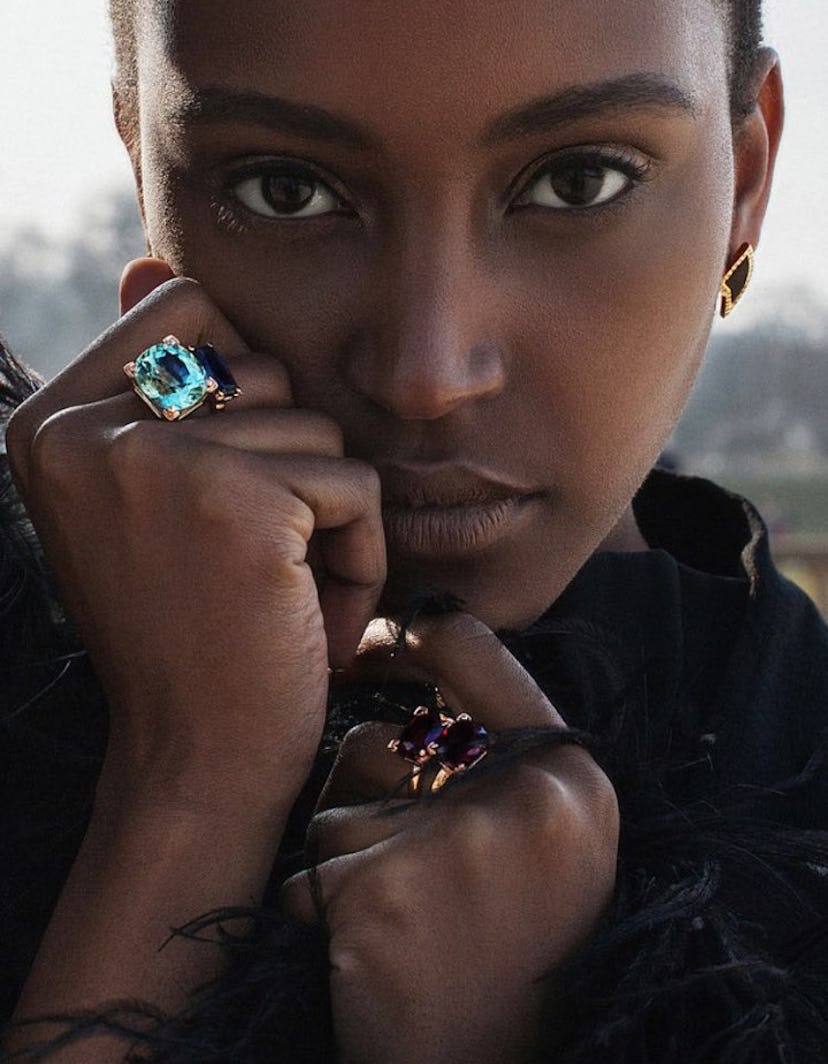Five Designers Breathing New Life Into Sustainable Fashion

Sustainability has become a trend among purveyors of fast fashion: H&M’s Conscious Collection, Zara’s commitment to supply-chain transparency, Toms, Warby Parker. But at the same time, an elite cadre of designers are making a push for sustainable, ethically sourced designs that combine a discerning eye with a discerning moral stance. “Nobody wants to wear beige, undyed clothes,” says Maria Cornejo of Zero + Maria Cornejo. As part of the inaugural class of the Council of Fashion Designers of America’s Fashion Initiative, a program aimed at promoting responsible, ethical decision making at all stages of the design process, brands like Cornejo’s, as well as Sara Beltrán of Dezso, Ryan Lobo and Ramon Martin of Tome, and Britt Cosgrove and Marina Polo of Svilu, have been exploring what it means to be part of an industry that thrives on the constant cycle of consumerism while supporting locally sourced products, recycled goods, and traditional production methods. Meet the new class of designers, the future of sustainable fashion, here.
1
Ryan Lobo and Ramon Martin of Tome: “Sustainability is a holistic approach to our business,” Martin says. “It’s a conflict with fashion today. It’s an industry that messages to everyone, buy something now and come back and buy something again in six months and throw out everything that you had before and replace it with something new.”
“We think of it as diversity, as well,” Lobo adds. “You can’t sustain a fashion model that speaks to the entire world that only features Caucasian faces.”
2
“We sourced that shearling from a farm in Vermont,” Martin says. “Those were a total byproduct of sheep farming, so the meat and cheese. There’s a limited amount that they make every year, and you know, they’re completely raw goods. They’re untreated, they are undyed, completely natural, they just tick every box of what we’re trying to achieve, and at the same time they’re completely fashion.”
Looks from Tome Fall 2016.
3
Nicole Heim of Cienne: “When I sort of started, I felt like sustainability needed to not really be so much of a thing, and that it needed to coexist within a modern brand,” she says. “From a design and product angle, the other thing that we really look at is sort of longevity of a garment and how long that can last. … The silhouettes are classic enough that they can carry on and it’s not so time-driven.”
4
“Our majority of fabrics are coming from artisans in developing countries,” Heim says. “We use hand-woven cotton in Ethiopia and hand-woven silk from India, alpaca wool from Peru, and not only are those natural fibers that are locally sourced within the region, they are also being made by these sort of traditional techniques that have been around for forever.”
Looks from Cienne Spring 2016.
5
Sara Beltrán of Dezso: “We all have to make an individual effort to make things better for us and the world. We have to take control,” she says. “Everything we make is hand made and we only work with artisans. … We are very loyal to our vendors and artisans. I believe in long-term relationships.”
Sara Beltrán © Juan Carlos Martin. Photo courtesy Dezso by Sara Beltrán.
6
“I am working with the same artisans since I started, and make a point to find a community of woman in Chiapas to braid my Mexican bracelets,” Beltrán says. Photo © Conrado Veliz, courtesy Dezso by Sara Beltrán.
7
Maria Cornejo of Zero + Maria Cornejo: “We’re not 100 percent sustainable. It’s always a work-in-progress,” she says. “It’s important more than ever to be sustainable and not only in locally producing — in trying to simplify the process as well. The clothes don’t have to travel around the world and back again. … If something is well designed, or the fabric is good, it will always be good. It doesn’t depend on a season or a date.”
8
“Sustainability is trying to be correct wherever possible. Paying people, where things are made, where they’re sourced, the way that they’re dyed,” Cornejo says. “There’s always a story attached to the actual fabric, so wherever possible, you know, it’s about communication. I think the more people know, the more people are engaged.”
Looks from Zero + Maria Cornejo Spring 2016.
9
Britt Cosgrove and Marina Polo of Svilu: “We work from an approach of mindfulness,” Cosgrove says. “It’s all about taking those little decisions and making them a little more thoughtful.”
“We kind of have these limits to work with, and for us that’s creatively exciting,” Polo adds. “We do carry fabrics from season to season, we innovate with color, with the way a fabric is treated, so it’s kind of a tighter edict for us.”
10
“The most important stage for us is fabric sourcing. … We really try to incorporate as many sustainable fabrics and fibers within the collection, whether it’s using organic cottons, recycled plastic bottle fabrics,” Polo says, “Patchworked fabric, and also upcycling fabrics from past collections.”
Looks from Svilu Spring 2016.